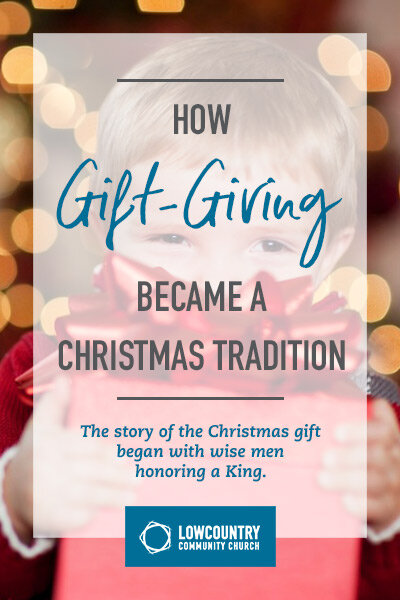How Gift-Giving Became a Christmas Tradition
By Donna Brooks
“After coming into the house they saw the Child with Mary His mother; and they fell to the ground and worshiped Him. Then, opening their treasures, they presented to Him gifts of gold, frankincense, and myrrh.” – Matthew 2:11
On Christmas day all across the United States, wide-eyed kids wake up their parents at an outrageously early hour in the morning to see what’s inside the beautifully wrapped boxes under the Christmas tree. In the United States and around the world, gift-giving is a Christmas tradition—one that is inspired by the wise men from the East who gave gifts of gold, frankincense and myrrh to the Christ Child—the greatest gift of all.
The history of gift-giving in the U.S.
The Pilgrims who came to America in the early 1600s were Puritans and did not celebrate Christmas. They believed that there was no scriptural basis for celebrating it, or Easter, for that matter. Plus, back in England, Christmas celebrations had become rowdy displays of drunkenness. As a result, Christmas was banned in England in 1659, and in 1660, it was also banned in New England. Even though Christmas became legal again in New England in the 1680s, it was not until the 19th century that Americans truly began to celebrate the holiday.
European Christmas customs, as well as books and poems published in the 1800s, were influential in establishing Christmas gift-giving in the U.S. Charles Dickens’ “A Christmas Carol” depicted the values of charity and generosity to others. At the same time, Washington Irving’s satirical book “The History of New York” and Clement Clarke Moore’s popular poem “Account of a Visit from St. Nicholas” (better known as “‘Twas the Night Before Christmas,”) described one certain gift-giver—“a right jolly old elf”—who brought toys to good boys and girls.
At first, gift-giving in the 1800s was small in scale and consisted of handmade trinkets, carved pieces of wood, sewed items and food. Laura Ingalls Wilder described the simplicity of Christmas on the prairie:
“That very Christmas, Laura Ingalls was delighted to find a shiny new tin cup, a peppermint candy, a heart-shaped cake, and a brand new penny in her stocking. For in those days, these four small gifts in her stocking were a wealth of gifts to the young girl.”
With the advent of the Industrial Revolution, manufactured goods became less expensive, and gifts were more affordable for the middle classes. In 1858, Macy’s opened its first store in New York City, and by the late 19th century, shopkeepers began marketing gifts for the holidays. By the early 20th century, Christmas shopping became a major driver in the U.S. economy.
Today, the Christmas shopping season is months long, with some stores stocking Christmas items on their shelves way before Halloween. And now we can even shop for Christmas gifts without ever leaving the house, thanks to the internet.
The ultimate gift
For many of us today, Christmas with all of the gift-giving can feel overly commercial, not to mention overwhelming. The commercialization of Christmas is not a new concern, however. Early in the 20th Century, a Harper’s Bazaar writer lamented, “Twenty-five years ago, Christmas was not the burden that it is now,” wrote Margaret Deland. "There was less haggling and weighing, less quid pro quo, less fatigue of body, less wearing of soul … “ Sound familiar? I certainly can relate to the writer’s angst. But Christmas doesn’t have to be that way. When you begin to feel the stress of the holidays, turn your focus to the One who loved you so much that He gave the ultimate gift of His Son, Jesus, and you will find peace that surpasses all understanding.
Donna Brooks is a freelance writer and editor and the owner of Red Clay Editorial Services in Bluffton, South Carolina. In her free time, Donna is an avid runner, reader, photographer and traveler.
References
The History of Christmas, HISTORY
A Brief History of the Christmas Present, The Week
When Americans Banned Christmas, The Week
A Brief History of Holiday Shopping in America
The New York City Origins of Santa Claus

